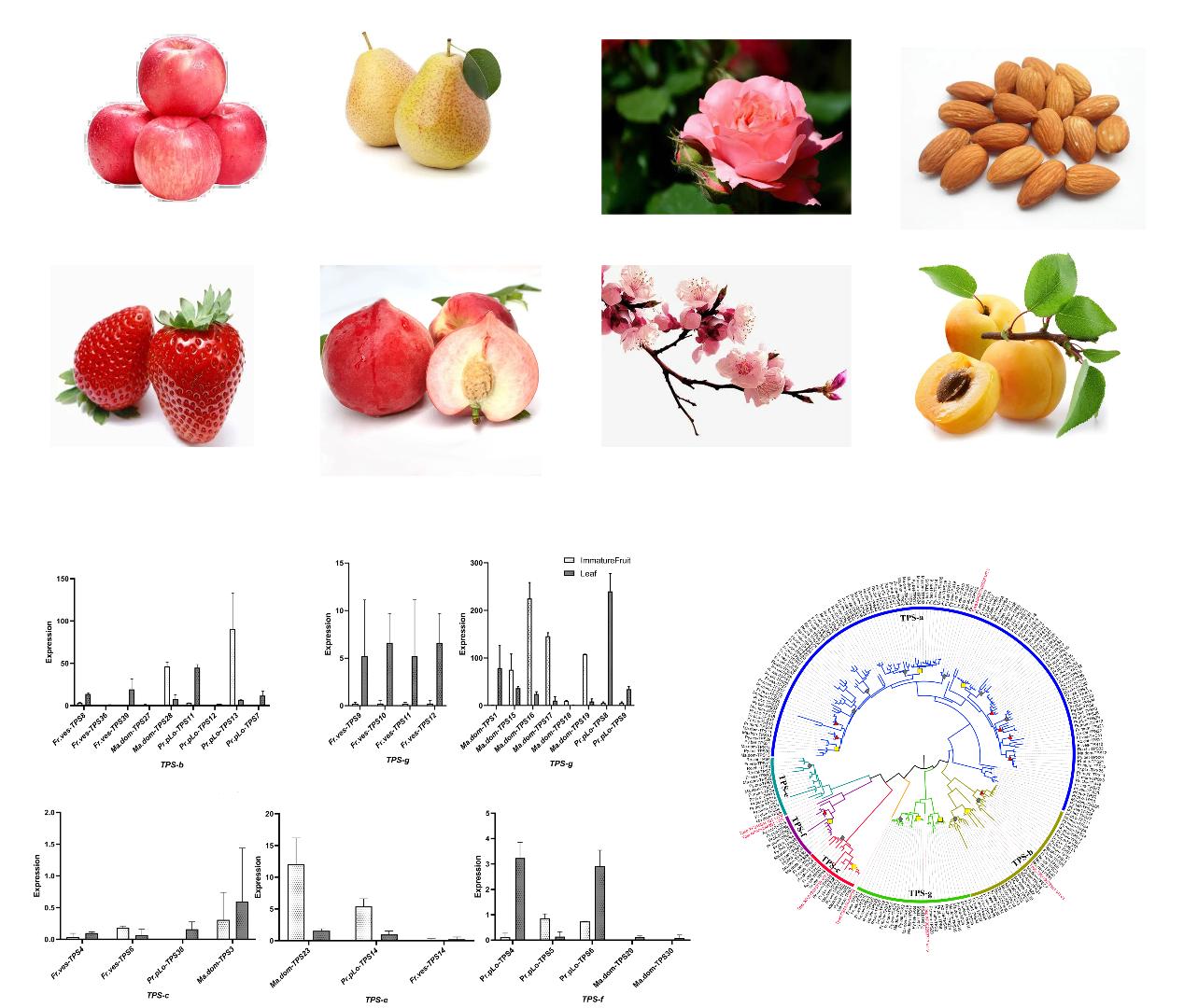Name:ZHANG Xiujun
Tell:
Email:zhangxj@wbgcas.cn
Organization:Wuhan Botanical Garden
Study of Terpene Synthases Unveils the Flavor Secrets of Rosaceae Plants
2022-05-31
A number of Rosaceae species are of economic importance as food crops, including apples, almonds, cherries, pears, raspberries, and strawberries. The inner quality of fruits is mainly determined by aroma and flavor. Volatile products, such as terpenoids, are important components of the aroma products. However, limited information is available regarding the distribution of the terpene synthases (TPS) gene family in Rosaceae.
In order to reveal the potential reason of flavor diversity of Rosaceae plants, researchers from Wuhan Botanical Garden investigated the TPS gene family in eight sequenced Rosaceae plants, including three Prunoideae, three Maloideae, and two Rosoideae species.
Results revealed that the family numbers and function of different TPS clades varied among three Rosaceae subfamilies. The average number of TPSs in Prunoideae species was lower than that of Maloideae and Rosoideae. Additionally, fewer TPSs in the early Prunoideae species, but more TPSs in modern peach, which further revealed the evident evolutionary plasticity of the TPS family. Lineage-and species-specific expansions of the TPSs were widely observed within different TPS clades.
The expression profiling results on the TPS gene family in three Rosaceae species showed that most identified TPSs were expressed in at least one tissue. And the expression pattern also varied among species for each TPS clade. It was worth noting that among the expressed TPSs, certain putative TPSs did not have both domains, indicating their underlying functional or regulatory petentials.
These results reveal the evolution of TPS family in Rosaceae and it will be useful for further genetic improvement of Rosaceae species.
These findings were published online in Plants entitled "Diversity and Functional Evolution of Terpene Synthases in Rosaceae".

The distribution and expression level of TPSs from clades b, c, g, e, and f in the representative Rosaceae species (Image by WBG)